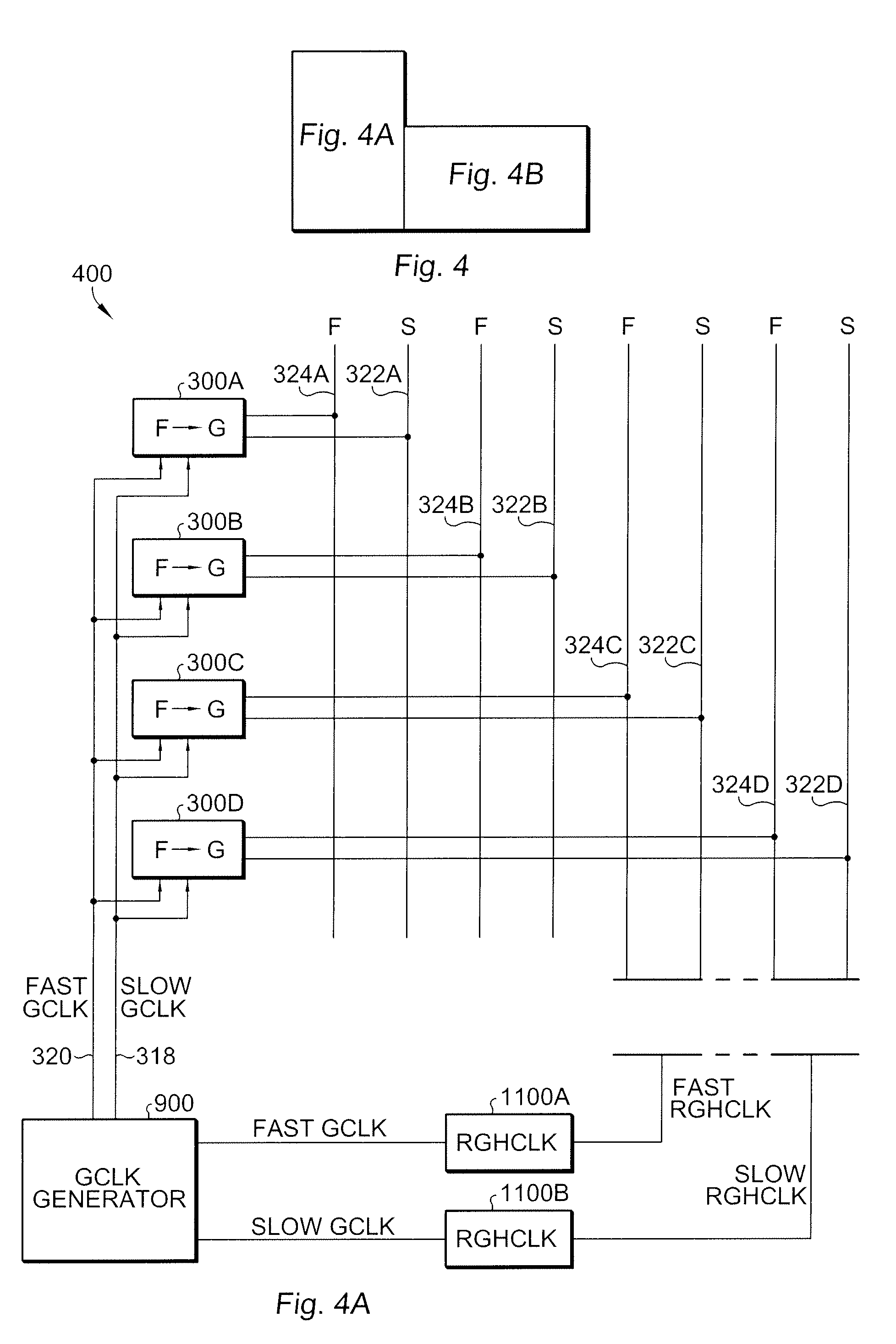Shielding of datalines with physical placement based on time staggered access
a dataline and physical placement technology, applied in the field of circuits, can solve the problems of slow data path, slow data path, difficult to obtain the very aggressive ddr3 speed target, etc., and achieve the effect of increasing the complexity of the control circuit and high frequency response performan
- Summary
- Abstract
- Description
- Claims
- Application Information
AI Technical Summary
Benefits of technology
Problems solved by technology
Method used
Image
Examples
Embodiment Construction
[0022]The present invention uses 128 data lines with no dedicated shields, but relies on the nature of the DDR3 eight bit pre-fetch to split the data bus into two groups: a fast group and a slow group. Since both groups are not switching at the same time, they appear to shield each other as long as they are physically placed in a fast-slow-fast-slow-etc. orientation. Referring now to FIG. 2, a data bus 200 according to the present invention is shown. Lines Ia through Ie alternate, wherein lines Ia, Ic, and Ie are fast data lines, and lines Ib and Id are slow data lines. The corresponding data line waveforms are shown, wherein waveforms 204, 208, and 212 step up first, and then a Δt later, waveforms 206 and 210 step down. Thus, the slow group is switched a Δt after the fast group. This Δt has to be long enough to allow the fast group to have completed switching (roughly 90% of Δv switch), but the Δt must be short enough so the slow data arrives at the output buffer in time. By using ...
PUM
 Login to View More
Login to View More Abstract
Description
Claims
Application Information
 Login to View More
Login to View More - R&D
- Intellectual Property
- Life Sciences
- Materials
- Tech Scout
- Unparalleled Data Quality
- Higher Quality Content
- 60% Fewer Hallucinations
Browse by: Latest US Patents, China's latest patents, Technical Efficacy Thesaurus, Application Domain, Technology Topic, Popular Technical Reports.
© 2025 PatSnap. All rights reserved.Legal|Privacy policy|Modern Slavery Act Transparency Statement|Sitemap|About US| Contact US: help@patsnap.com



